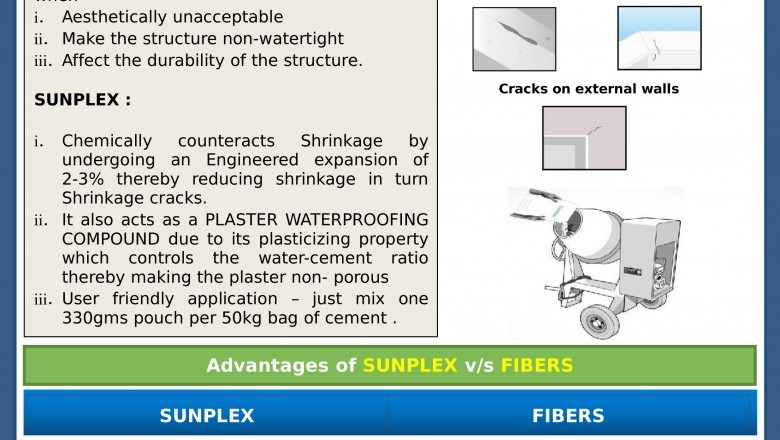views

MECHANISM OF WATERPROOFING
Mechanism of Waterproofing by Proper Cement Hydration
One of the products of hydration of cement is cementgel or Tobermorite, which is formed upto water cement ratio 0.65 to 0.7. At lower w/c ratio, it is formed more and more and vice versa. This hydration product has absolutely least co-efficient of permeability, i.e., 7x10-14 cm/sec and by itself blocks the pores and capillary in the concrete. This can result into good waterproof concrete of 10-10 to 10-12 cm/sec. However, actually in practice at average job, we end up getting the permeability anywhere between 10-6 to 10-8 cm/sec. This is mainly due to uncontrolled w/c ratio, lack of curing and also other bad detailing.
Combination of Conventional and Non-Conventional Ways
Various ways of waterproofing the structures are recommended. However, a discerning client and the consultant need to study all the possible parameters, positive as well as negative and then come to a recommendatory conclusion. Conventional ways of waterproofing are like brickbat coba followed by IPS. Brickbat coba is generally used to provide a slope to the treatment and IPS layer works as an impermeable treatment by itself which also assumes the slope of brickbat coba. Though, otherwise found fairly successful; today due to speed of the work, quality of sand, inadequate curing to the concrete which is made from finer grade cement and many other related reasons the IPS is seen to crack and disintegrate allowing an early entry to water. The brickbat coba is not otherwise supposed to be waterproof, but on the contrary is absorbent, which accumulates the water. On saturation the brickbat coba attempts to transfer the water further, which generally penetrates into the slab, and penetrates more easily if the same is porous or full of cracks. As it is concrete is not by itself a fully impermeable material, and various compromises while construction can decrease the impermeability further. Needless to say, this causes unsightly leakages to begin with followed by corrosion of steel and finally results in structural damage.
About the author

Dr. S. K. Manjrekar (Ph.D. Bombay University - 1977), Dr. S. K. Manjrekar is Chairman and Managing Director of a well-known construction chemicals company in India - M/s. Sunanda Speciality Coatings Pvt. Ltd.,for last 40 years. Operations in UAE, Oman, Nepal, Tanzania and USA.
He is actively working on several technical and administrative committees of American Concrete Institute (ACI) in USA.
He teaches concrete field testing course of ACI to engineers of India as a ‘Train the Trainer’ initiative.
He has published more than 200 papers in various national and international journals.
He has given more than 100 key note lectures in the field of Concrete, Corrosion Prevention, Waterproofing and Nano materials etc.
Lectured extensively internationally in Countries - United Kingdom - London, Leeds University, United States of America - Pittsburgh, Malaysia, Oman, Dubai, Sharjah, Kuwait, Romania, Hong Kong – Hong Kong University and many more as an invited keynote speaker.
He is the guest editor of International journals in UK, USA and Mexico.











